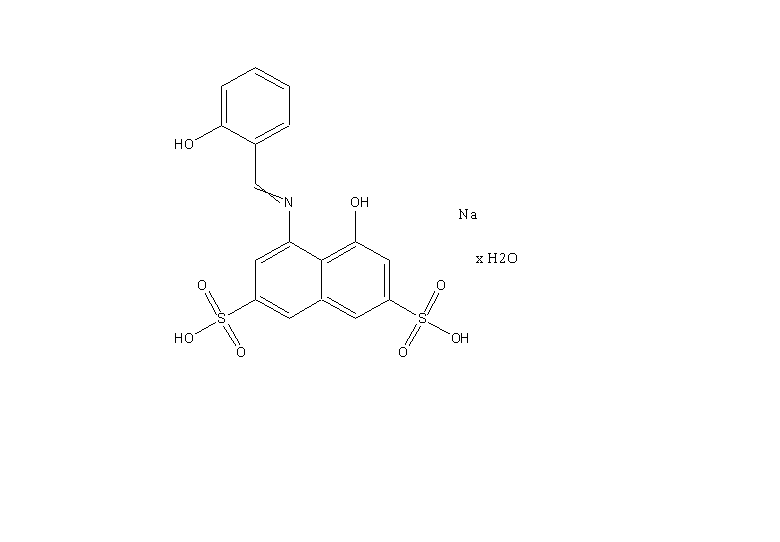
AzoMethine-H Monosodium salt hydrate
CAS No. 206752-32-1
AzoMethine-H Monosodium salt hydrate( Sodium 5-hydroxy-4-((2-hydroxybenzylidene)amino)-7-sulfonaphthalene-2-sulfonate hydrate )
Catalog No. M23925 CAS No. 206752-32-1
AzoMethine-H Monosodium salt hydrate is a reagent used for the colorimetric determination of boron in soil, plants, composts, manure, water and nutrient solutions.
Purity : >98% (HPLC)
 COA
COA
 Datasheet
Datasheet
 HNMR
HNMR
 HPLC
HPLC
 MSDS
MSDS
 Handing Instructions
Handing Instructions
| Size | Price / USD | Stock | Quantity |
| 5MG | 45 | In Stock |


|
| 10MG | 68 | In Stock |


|
| 25MG | 115 | In Stock |


|
| 50MG | 173 | In Stock |


|
| 100MG | 258 | In Stock |


|
| 200MG | 388 | In Stock |


|
| 500MG | 642 | In Stock |


|
| 1G | Get Quote | In Stock |


|
Biological Information
-
Product NameAzoMethine-H Monosodium salt hydrate
-
NoteResearch use only, not for human use.
-
Brief DescriptionAzoMethine-H Monosodium salt hydrate is a reagent used for the colorimetric determination of boron in soil, plants, composts, manure, water and nutrient solutions.
-
DescriptionAzoMethine-H Monosodium salt hydrate is a reagent used for the colorimetric determination of boron in soil, plants, composts, manure, water and nutrient solutions.
-
In Vitro——
-
In Vivo——
-
SynonymsSodium 5-hydroxy-4-((2-hydroxybenzylidene)amino)-7-sulfonaphthalene-2-sulfonate hydrate
-
PathwayOthers
-
TargetOther Targets
-
RecptorOthers
-
Research Area——
-
Indication——
Chemical Information
-
CAS Number206752-32-1
-
Formula Weight——
-
Molecular Formula——
-
Purity>98% (HPLC)
-
Solubility——
-
SMILES——
-
Chemical Name——
Shipping & Storage Information
-
Storage(-20℃)
-
ShippingWith Ice Pack
-
Stability≥ 2 years
Reference
1.Liv L , Yener M , Karaku E . A novel voltammetric method for the sensitive and selective determination of carbonate or bicarbonate ions by an azomethine-H probe[J]. Analytical Methods, 2021, 13.
molnova catalog



related products
-
Dimethyl sulfoxide
A highly polar organic liquid, that is used widely as a chemical solvent.
-
Dioxopromethazine hy...
Dioxopromethazine is a target-based classification of drug and available in a number of countries worldwide.
-
Berberine sulfate
Berberine sulfate (Berberal) is a quaternary ammonium salt of the benzylisoquinoline alkaloid proto-berberines, which can be used in the study of type 2 diabetes mellitus, abdominal obesity and metabolism-related fatty liver disease.



 Cart
Cart
 sales@molnova.com
sales@molnova.com


